Your Tropical rainforest characteristics soil images are available in this site. Tropical rainforest characteristics soil are a topic that is being searched for and liked by netizens today. You can Get the Tropical rainforest characteristics soil files here. Download all royalty-free images.
If you’re looking for tropical rainforest characteristics soil pictures information linked to the tropical rainforest characteristics soil topic, you have pay a visit to the right site. Our website frequently provides you with suggestions for downloading the highest quality video and image content, please kindly search and find more informative video articles and graphics that fit your interests.
Tropical Rainforest Characteristics Soil. In the tropical rainforest soil animals and plants quickly decompose all of the material that falls onto the surface of the soil. Structure of a tropical rainforest. Analyses were made of soils from six pits to determine several physical and chemical properties of the topsoil of the lowland forest and ginger belt zones. The truth is that the soil very thin and lacks nutrients.
 Tropical Soils Less Is More In Fast Carbon Pathways But Only With Standing Forest Permaculturenews Org Soil Layers Soil Management Soil From pinterest.com
Tropical Soils Less Is More In Fast Carbon Pathways But Only With Standing Forest Permaculturenews Org Soil Layers Soil Management Soil From pinterest.com
The truth is that the soil very thin and lacks nutrients. The tropical rain forest has thick vegetation often forming three separate layers- the canopy the understory and the ground layer. One of the greatest MYTHS associated with Amazon Rainforest is that the soil is extremely nutrient rich. Eg trees and plants have shallow-reaching roots to absorb nutrients from the thin fertile layer in the soil. Many of these soils are Oxisols and Ultisols. This high rate of decomposition is the result of phosphorus levels in the soils precipitation high temperatures and the extensive microorganism communities.
Tropical rainforests are rainforests that occur in areas of tropical rainforest climate in which there is no dry season all months have an average precipitation of at least 60 mm and may also be referred to as lowland equatorial evergreen rainforestTrue rainforests are typically found between 10 degrees north and south of the equator see map.
Some soils are also exposed to heat and the sunlight turns the soil into red clay. Tropical rainforest biome refers to an ecosystem composed of vast sprawling forests. A majority of the soils in this area are Alfisols and Ultisols. Soil materials were introduced in 1991 during construction and start-up of Biosphere 2. Analyses were made of soils from six pits to determine several physical and chemical properties of the topsoil of the lowland forest and ginger belt zones. Structure of a tropical rainforest.
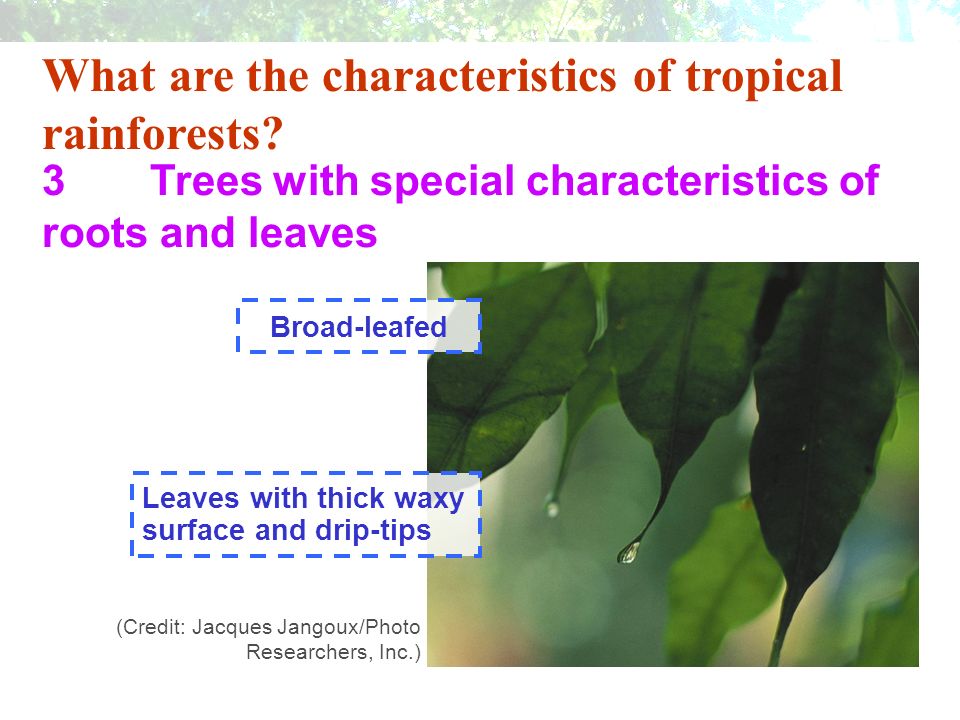 Source: slideplayer.com
Source: slideplayer.com
This high rate of decomposition is the result of phosphorus levels in the soils precipitation high temperatures and the extensive microorganism communities. Due to the large micelles phospholipid compartments within the soil that are tightly bound together. Characteristics of tropical rainforests. The kaolinite clay soil that is commonly found in tropical regions has very good drainage. Analyses were made of soils from six pits to determine several physical and chemical properties of the topsoil of the lowland forest and ginger belt zones.
 Source: dw.com
Source: dw.com
Eg trees and plants have shallow-reaching roots to absorb nutrients from the thin fertile layer in the soil. In the tropical rainforest soil animals and plants quickly decompose all of the material that falls onto the surface of the soil. Analyses were made of soils from six pits to determine several physical and chemical properties of the topsoil of the lowland forest and ginger belt zones. This high rate of decomposition is the result of phosphorus levels in the soils precipitation high temperatures and the extensive microorganism communities. The truth is that the soil very thin and lacks nutrients.
 Source: slideplayer.com
Source: slideplayer.com
This high rate of decomposition is the result of phosphorus levels in the soils precipitation high temperatures and the extensive microorganism communities. 16-20 Soil Dispelling the Myth. Characteristics of tropical rainforests. Eg trees and plants have shallow-reaching roots to absorb nutrients from the thin fertile layer in the soil. Analyses were made of soils from six pits to determine several physical and chemical properties of the topsoil of the lowland forest and ginger belt zones.
 Source: in.pinterest.com
Source: in.pinterest.com
These soils are very old and low in fertility but since there is a dry season more of the nutrients can stay in place. Bacteria and fungi then break down most of the organic matter. Soil materials were introduced in 1991 during construction and start-up of Biosphere 2. Tropical rainforest also spelled tropical rain forest luxuriant forest found in wet tropical uplands and lowlands around the EquatorTropical rainforests which worldwide make up one of Earths largest biomes major life zones are dominated by broad-leaved trees that form a dense upper canopy layer of foliage and contain a diverse array of vegetation and other life. The soils of tropical rainforests are characterized by rapid recycling of fallen leaves and other organic matter due to the large biomass of the rainforest.
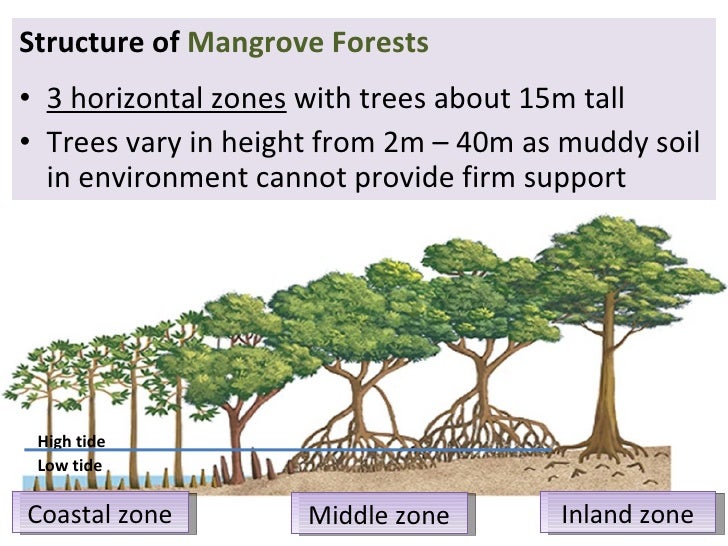 Source: civilsdaily.com
Source: civilsdaily.com
16-20 Soil Dispelling the Myth. The kaolinite clay soil that is commonly found in tropical regions has very good drainage. Tropical rainforest characteristics soil. Amazon Rainforest Characteristics Facts. A majority of the soils in this area are Alfisols and Ultisols.
 Source: pinterest.com
Source: pinterest.com
The soils of tropical rainforests are characterized by rapid recycling of fallen leaves and other organic matter due to the large biomass of the rainforest. This strips out most of the nutrients. The soils of the tropical rainforest are mainly derived from granites and rhyolites and morphological sedimentary rocks. Tropical rainforest biome refers to an ecosystem composed of vast sprawling forests. Due to the large micelles phospholipid compartments within the soil that are tightly bound together.
 Source: slideplayer.com
Source: slideplayer.com
Analyses were made of soils from six pits to determine several physical and chemical properties of the topsoil of the lowland forest and ginger belt zones. One of the biome areas receiving soil was the tropical rainforest TRF. Three years later in November 1993 physical and chemical characteristics of soils from this area were examined using six soil pits. In the tropical rainforest soil animals and plants quickly decompose all of the material that falls onto the surface of the soil. In a tropical rainforest a few examples of abiotic factors are soil sunlight rocks and rain.

Termites and earthworms play a valuable part in initially breaking up litter and incorporating it into the soil. They are a sub-set of the tropical. One of the greatest MYTHS associated with Amazon Rainforest is that the soil is extremely nutrient rich. Abiotic factors are things that impact the ecosystem of a particular biome that are not alive. Soil materials were introduced in 1991 during construction and start-up of Biosphere 2.
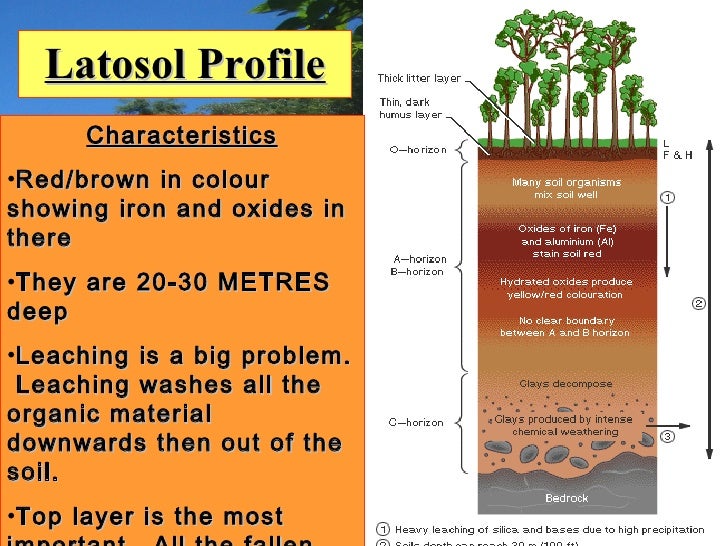 Source: slideshare.net
Source: slideshare.net
Termites and earthworms play a valuable part in initially breaking up litter and incorporating it into the soil. 16-20 Soil Dispelling the Myth. Some soils are also exposed to heat and the sunlight turns the soil into red clay. In the tropical rainforest however rainfall is year round and can be daily. The truth is that the soil very thin and lacks nutrients.
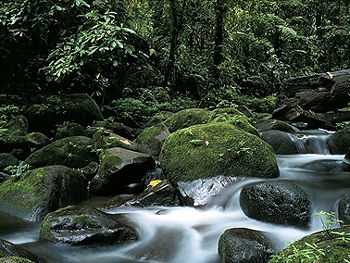 Source: wtamu.edu
Source: wtamu.edu
After 3 years in place soils of the tropical rainforest TRF area of Biosphere 2 were quantitatively sampled to determine the chemical and physical properties at different depths. Due to the large micelles phospholipid compartments within the soil that are tightly bound together. After 3 years in place soils of the tropical rainforest TRF area of Biosphere 2 were quantitatively sampled to determine the chemical and physical properties at different depths. This high rate of decomposition is the result of phosphorus levels in the soils precipitation high temperatures and the extensive microorganism communities. The kaolinite clay soil that is commonly found in tropical regions has very good drainage.
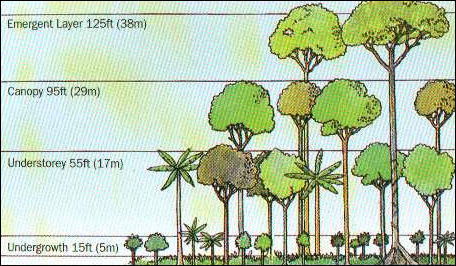 Source: factsanddetails.com
Source: factsanddetails.com
Amazon Rainforest Characteristics Facts. 16-20 Soil Dispelling the Myth. The kaolinite clay soil that is commonly found in tropical regions has very good drainage. One of the biome areas receiving soil was the tropical rainforest TRF. Abiotic factors are things that impact the ecosystem of a particular biome that are not alive.
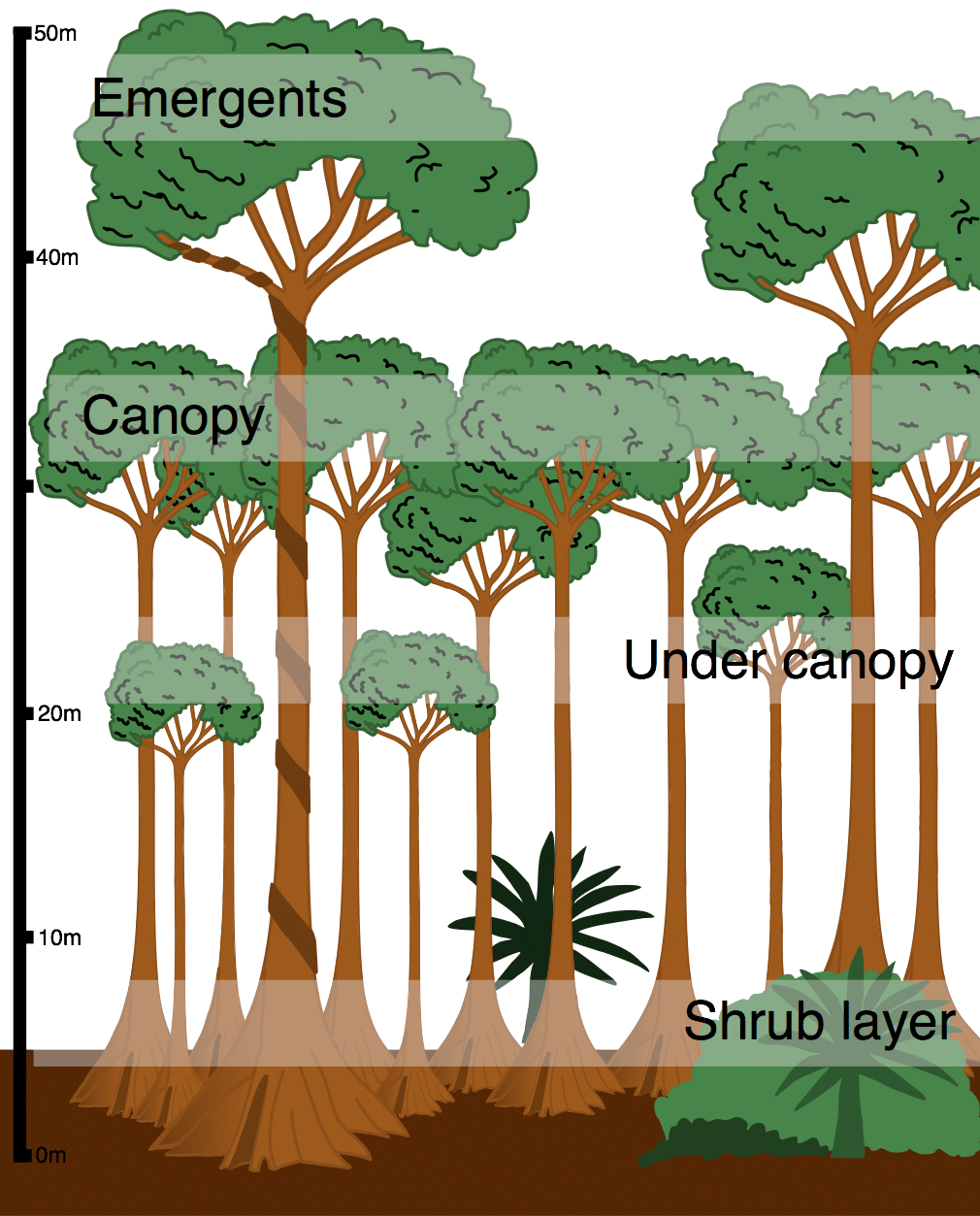 Source: internetgeography.net
Source: internetgeography.net
Three years later in November 1993 physical and chemical characteristics of soils from this area were examined using six soil pits. Three years later in November 1993 physical and chemical characteristics of soils from this area were examined using six soil pits. Eg trees and plants have shallow-reaching roots to absorb nutrients from the thin fertile layer in the soil. This high rate of decomposition is the result of phosphorus levels in the soils precipitation high temperatures and the extensive microorganism communities. Soil materials were introduced in 1991 during construction and start-up of Biosphere 2.
 Source: pinterest.com
Source: pinterest.com
A majority of the soils in this area are Alfisols and Ultisols. The soils of tropical rainforests are characterized by rapid recycling of fallen leaves and other organic matter due to the large biomass of the rainforest. This high rate of decomposition is the result of phosphorus levels in the soils precipitation high temperatures and the extensive microorganism communities. Many of these soils are Oxisols and Ultisols. A majority of the soils in this area are Alfisols and Ultisols.
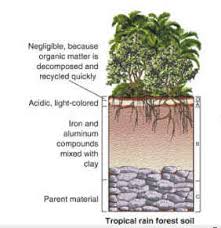 Source: hbkportal.co.uk
Source: hbkportal.co.uk
Some soils are also exposed to heat and the sunlight turns the soil into red clay. Soil materials were introduced in 1991 during construction and start-up of Biosphere 2. This notion comes from the dense and lush green forest that stands on the Amazon Basin. This high rate of decomposition is the result of phosphorus levels in the soils precipitation high temperatures and the extensive microorganism communities. Structure of a tropical rainforest.
 Source: teachstarter.com
Source: teachstarter.com
One of the greatest MYTHS associated with Amazon Rainforest is that the soil is extremely nutrient rich. This high rate of decomposition is the result of phosphorus levels in the soils precipitation high temperatures and the extensive microorganism communities. Human Activities of Tropical Rainforest biome. 16-20 Soil Dispelling the Myth. Eg trees and plants have shallow-reaching roots to absorb nutrients from the thin fertile layer in the soil.
 Source: pinterest.com
Source: pinterest.com
The kaolinite clay soil that is commonly found in tropical regions has very good drainage. Some soils are also exposed to heat and the sunlight turns the soil into red clay. Analyses were made of soils from six pits to determine several physical and chemical properties of the topsoil of the lowland forest and ginger belt zones. In the tropical rainforest however rainfall is year round and can be daily. Understanding the characteristics of tropical soils will help you to identify what you need to grow specific plants in the tropical region.
 Source: prezi.com
Source: prezi.com
Tropical rainforest also spelled tropical rain forest luxuriant forest found in wet tropical uplands and lowlands around the EquatorTropical rainforests which worldwide make up one of Earths largest biomes major life zones are dominated by broad-leaved trees that form a dense upper canopy layer of foliage and contain a diverse array of vegetation and other life. This high rate of decomposition is the result of phosphorus levels in the soils precipitation high temperatures and the extensive microorganism communities. Characteristics of tropical rainforests. Tropical rainforest also spelled tropical rain forest luxuriant forest found in wet tropical uplands and lowlands around the EquatorTropical rainforests which worldwide make up one of Earths largest biomes major life zones are dominated by broad-leaved trees that form a dense upper canopy layer of foliage and contain a diverse array of vegetation and other life. In the tropical rainforest soil animals and plants quickly decompose all of the material that falls onto the surface of the soil.
 Source: indiastudychannel.com
Source: indiastudychannel.com
Soil in the tropical rainforest is particularly very poor because the soil is more than 100 million years old. Structure of a tropical rainforest. One of the greatest MYTHS associated with Amazon Rainforest is that the soil is extremely nutrient rich. The tropical rain forest has thick vegetation often forming three separate layers- the canopy the understory and the ground layer. The kaolinite clay soil that is commonly found in tropical regions has very good drainage.
This site is an open community for users to share their favorite wallpapers on the internet, all images or pictures in this website are for personal wallpaper use only, it is stricly prohibited to use this wallpaper for commercial purposes, if you are the author and find this image is shared without your permission, please kindly raise a DMCA report to Us.
If you find this site adventageous, please support us by sharing this posts to your preference social media accounts like Facebook, Instagram and so on or you can also bookmark this blog page with the title tropical rainforest characteristics soil by using Ctrl + D for devices a laptop with a Windows operating system or Command + D for laptops with an Apple operating system. If you use a smartphone, you can also use the drawer menu of the browser you are using. Whether it’s a Windows, Mac, iOS or Android operating system, you will still be able to bookmark this website.





